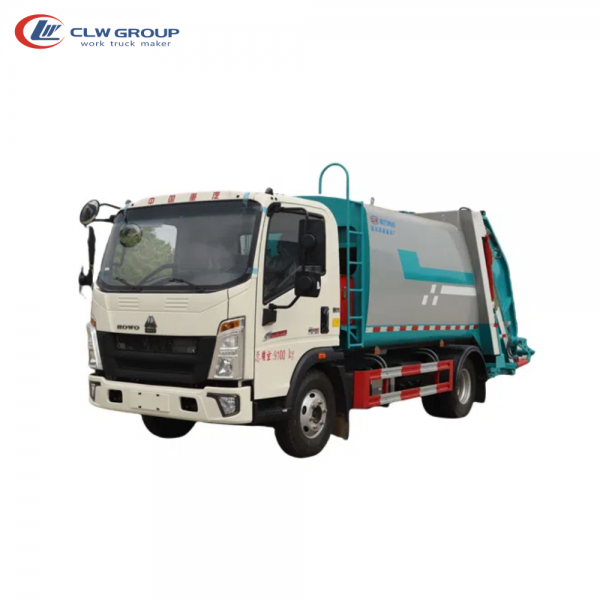Introduction:
Truck-mounted cranes have become an indispensable tool in various industries, from construction and infrastructure development to logistics and material handling. These versatile machines are capable of lifting heavy loads, reaching great heights, and maneuvering in tight spaces. One of the key components that enable the efficient operation of truck-mounted cranes is the hydraulic system. In recent years, advancements in hydraulic technology have revolutionized the performance, safety, and efficiency of these machines. This article will delve into the details of truck-mounted cranes with advanced hydraulic systems, exploring their key features, benefits, and applications.
Evolution of Hydraulic Systems in Truck-Mounted Cranes:
Hydraulics have been an integral part of truck-mounted cranes since their inception. The basic principle of hydraulics involves the use of fluid pressure to generate mechanical force and motion. In the early days, truck-mounted cranes relied on simple hydraulic systems with manual controls and limited capabilities. However, with advancements in technology and engineering, hydraulic systems in truck-mounted cranes have evolved significantly.
One of the key advancements in hydraulic systems for truck-mounted cranes is the integration of sophisticated control systems and sensors. Modern cranes are equipped with electronic control units (ECUs) that monitor and regulate various parameters such as load capacity, boom extension, and stability. These ECUs ensure safe and precise operation of the crane by automatically adjusting the hydraulic pressure and flow based on real-time data.
Another significant development in hydraulic systems is the use of proportional valves and variable displacement pumps. Proportional valves allow for fine control of the hydraulic flow, enabling smooth and precise movements of the crane. Variable displacement pumps adjust the flow rate of hydraulic fluid based on the load requirements, optimizing energy efficiency and reducing wear and tear on the system.
Benefits of Advanced Hydraulic Systems in Truck-Mounted Cranes:
The integration of advanced hydraulic systems in truck-mounted cranes offers a wide range of benefits for operators, contractors, and project managers. Some of the key advantages include:

1. Enhanced Performance: Advanced hydraulic systems enable truck-mounted cranes to lift heavier loads, reach greater heights, and operate more efficiently. The precise control and synchronization of hydraulic movements result in faster cycle times and improved productivity on the job site.
2. Increased Safety: Safety is paramount in the operation of truck-mounted cranes, especially when working in challenging environments or lifting delicate materials. box truck with built-in safety features such as overload protection, anti-two block systems, and automatic stability control help prevent accidents and ensure the well-being of the operators and bystanders.
3. Improved Reliability: The robust design and advanced components of modern hydraulic systems contribute to the overall reliability and durability of truck-mounted cranes. With proper maintenance and regular inspections, these machines can withstand heavy usage and harsh working conditions, providing long-term value for the owners and operators.
4. Operator Comfort: Advanced hydraulic systems not only enhance the performance of truck-mounted cranes but also improve the operator's experience. Ergonomically designed controls, intuitive interfaces, and automated functions make it easier for operators to maneuver the crane with precision and confidence, reducing operator fatigue and increasing overall efficiency.
Applications of Truck-Mounted Cranes with Advanced Hydraulic Systems:
Truck-mounted cranes with advanced hydraulic systems find applications across a wide range of industries and job sites. Some of the common uses include:
1. Construction and Infrastructure Development: Truck-mounted cranes are essential for lifting heavy materials, such as steel beams, concrete panels, and construction equipment, on construction sites. The advanced hydraulic systems in these cranes enable precise positioning of loads and efficient operation in tight spaces, making them ideal for urban construction projects.
2. Logistics and Material Handling: Truck-mounted cranes play a crucial role in logistics and material handling operations, such as loading and unloading cargo, transporting goods, and organizing warehouse inventory. The versatility and mobility of these cranes, combined with their advanced hydraulic systems, make them valuable assets for streamlining material handling processes and improving operational efficiency.
3. Utility and Maintenance Services: Truck-mounted cranes are widely used in utility maintenance, tree trimming, and infrastructure repair tasks. The ability to extend the boom, rotate the crane, and lift heavy equipment with precision is essential for performing maintenance work on power lines, streetlights, and telecommunications towers. Advanced hydraulic systems ensure safe and reliable operation in these critical applications.
4. Emergency Response and Rescue Operations: Truck-mounted cranes equipped with advanced hydraulic systems are deployed in emergency response and rescue operations, such as lifting vehicles, debris, or trapped individuals in disaster scenarios. The precise control and stability provided by the hydraulic system are invaluable for executing complex rescue missions quickly and safely.
Conclusion:
Truck-mounted cranes with advanced hydraulic systems represent the cutting edge of technology in the field of material handling and lifting equipment. The evolution of hydraulic systems, from basic controls to sophisticated electronic systems, has transformed the performance, safety, and efficiency of these machines. The benefits of advanced hydraulic systems, including enhanced performance, increased safety, improved reliability, and operator comfort, make truck-mounted cranes indispensable tools in various industries and applications. As technology continues to advance, we can expect further innovations in hydraulic systems that will further optimize the capabilities and versatility of truck-mounted cranes.
